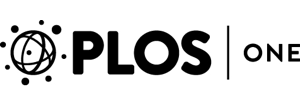Authors
Kamfai Chan, Mauricio Coen, Justin Hardick, Charlotte A. Gaydos, Kah-Yat Wong, Clayton Smith, Scott A. Wilson, Siva Praneeth Vayugundla, Season Wong
Abstract
Most molecular diagnostic assays require upfront sample preparation steps to isolate the target’s nucleic acids, followed by its amplification and detection using various nucleic acid amplification techniques. Because molecular diagnostic methods are generally rather difficult to perform manually without highly trained users, automated and integrated systems are highly desirable but too costly for use at point-of-care or low-resource settings. Here, we showcase the development of a low-cost and rapid nucleic acid isolation and amplification platform by modifying entry-level 3D printers that cost between $400 and $750. Our modifications consisted of replacing the extruder with a tip-comb attachment that houses magnets to conduct magnetic particle-based nucleic acid extraction. We then programmed the 3D printer to conduct motions that can perform high-quality extraction protocols. Up to 12 samples can be processed simultaneously in under 13 minutes and the efficiency of nucleic acid isolation matches well against gold-standard spin-column-based extraction technology. Additionally, we used the 3D printer’s heated bed to supply heat to perform water bath-based polymerase chain reactions (PCRs). Using another attachment to hold PCR tubes, the 3D printer was programmed to automate the process of shuttling PCR tubes between water baths. By eliminating the temperature ramping needed in most commercial thermal cyclers, the run time of a 35-cycle PCR protocol was shortened by 33%. This article demonstrates that for applications in resource-limited settings, expensive nucleic acid extraction devices and thermal cyclers that are used in many central laboratories can be potentially replaced by a device modified from inexpensive entry-level 3D printers.




